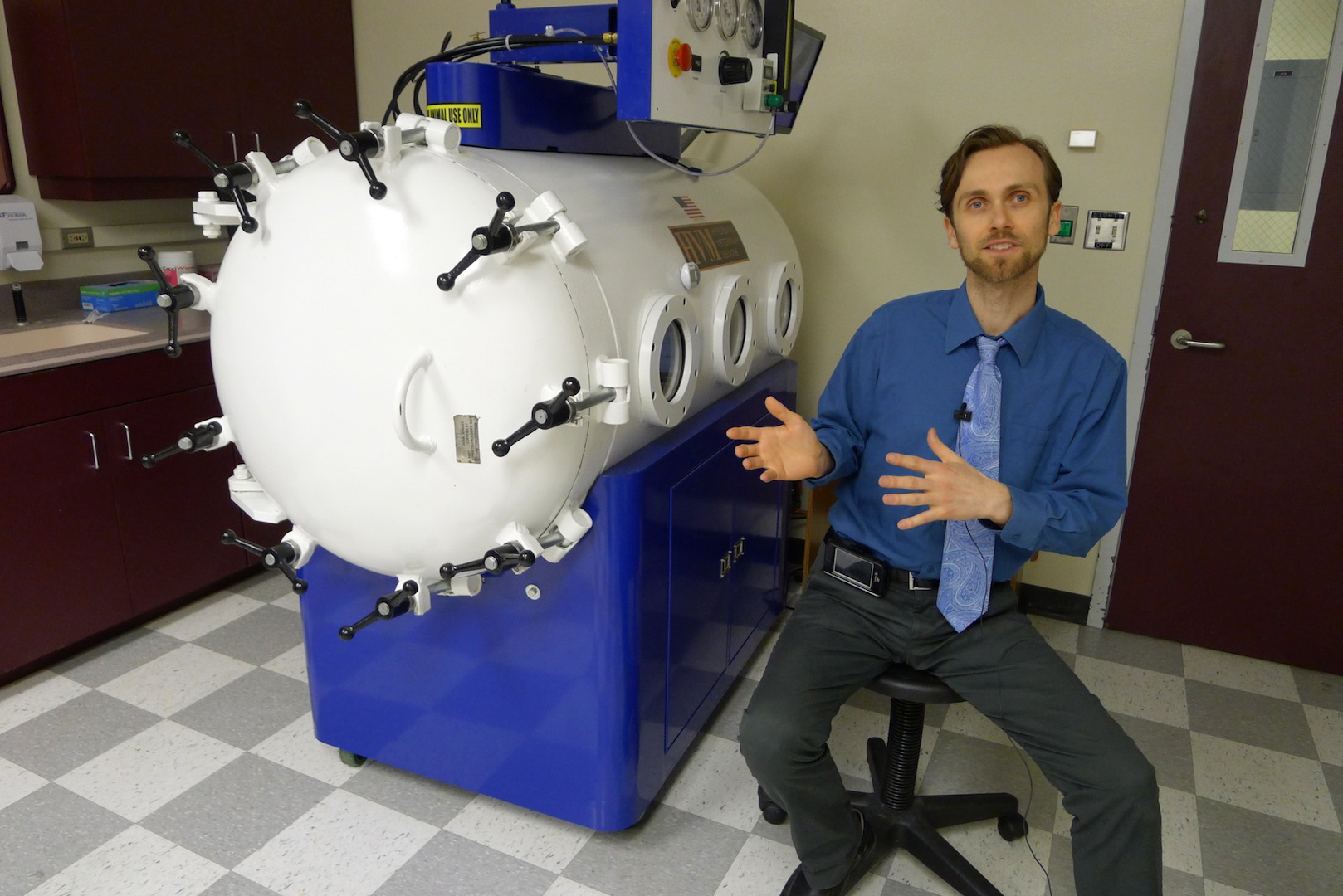GAINESVILLE, Fla. — Hyperbaric chambers have been used for decades to treat divers with the bends, burn victims and people with traumatic injuries, but in Florida and a handful of other states they’re increasingly being used on ailing pets.
Doctors at the University of Florida’s College of Veterinary Medicine have recently used an oxygen chamber on dogs, cats, ferrets, rabbits and one monkey.
Veterinarian and professor Justin Shmalberg said the capsule has been used to treat animals that have been bitten by rattlesnakes, hit by cars and those with infected wounds, among other things.
“Any place we have swelling of tissue, we oftentimes are thinking about the hyperbaric chamber as something we could do to decrease that,” he said.
Shmalberg said the chamber’s high-pressure atmosphere of pure oxygen appears to help reduce swelling and aid healing time. He added that the school will begin clinical trials this summer to determine how — or even if — the hyperbaric chamber really is effective in speeding recoveries and healing animals.
There is little research on hyperbaric treatments and pets, although veterinarians who use the chambers note that most of the research for human hyperbaric treatments comes from trials done on rabbits and rats.
“We want to make sure there’s really good science behind it,” said Dr. Diane Levitan, who owns Peace Love Pets Veterinary Care in Commack, N.Y. “It’s not a panacea. There are specific reasons why this is helpful.”
Levitan has a hyperbaric chamber in her practice and is writing an article for a veterinary journal on the treatment. Like Shmalberg, she has seen an improved rate of healing for certain conditions such as herniated discs, abscesses and even post-radiation swelling.
In humans, insurance companies will pay for hyperbaric treatment for several conditions. Some insurance companies won’t pay for hyperbaric treatment for wounds or ulcers, saying that it’s an “unproven” therapy — but some people swear by the treatment and seek out private clinics.
It’s the same with pet owners. Veterinarians with oxygen chambers say that people with sick pets often will often research the treatment and request it after becoming familiar with it through human medicine.
“It is a very new modality for treatment in veterinary medicine,” said Dr. Andrew Turkell of Calusa Veterinary Center in Boca Raton, Fla.
The devices used by UF, Levitan and Turkell are about the size of a loveseat and are manufactured in Florida by a Boca Raton company named Hyperbaric Veterinary Medicine. Turkell was the first doctor to sign a contract with Hyperbaric Veterinary Medicine, and estimates that he’s used the chamber 750-800 times in the past year and a half.
“I find that it’s really very effective for any kind of trauma,” he said, adding that he’s seen improvements in pets that have been hit by cars that have been subsequently treated in the chamber.
At the UF clinic, treatment costs about $125 per session.
Dr. Dorie Amour, the director of Emory University’s wound care clinic, suggested that hyperbaric therapy in pets be a last-resort treatment. It “has to be a therapy used when there is no alternative. Or a therapy used for a very serious problem for which there hasn’t been a solution.”
Mike Ray, the owner of Maggie, an 11-year-old dachshund with a gaping wound and recurring infection in her back paw, says he’s noticed a difference after two sessions in the capsule. New fur is growing where raw flesh was once exposed.



